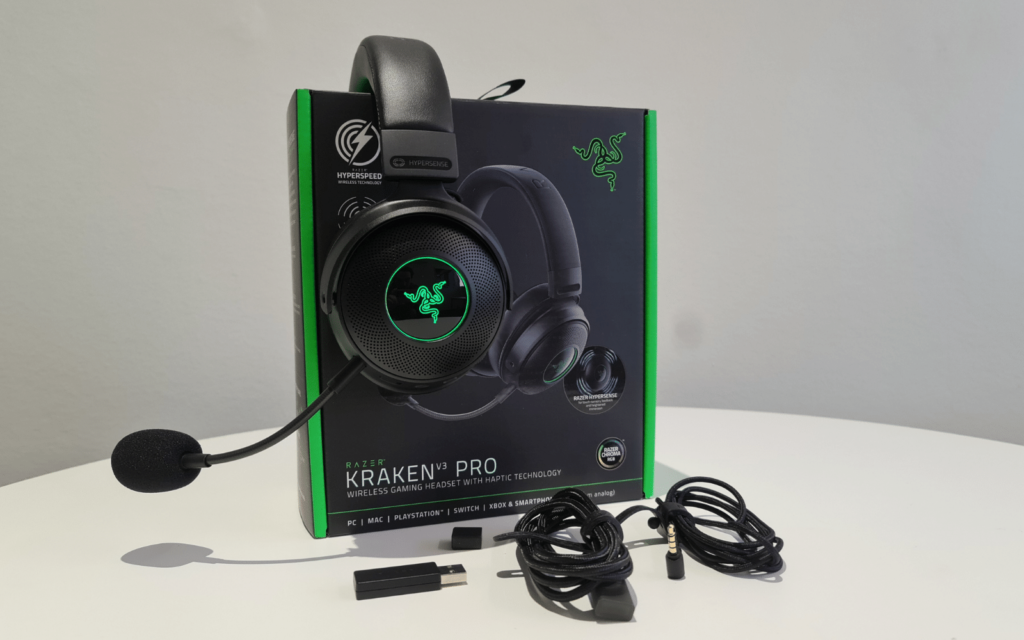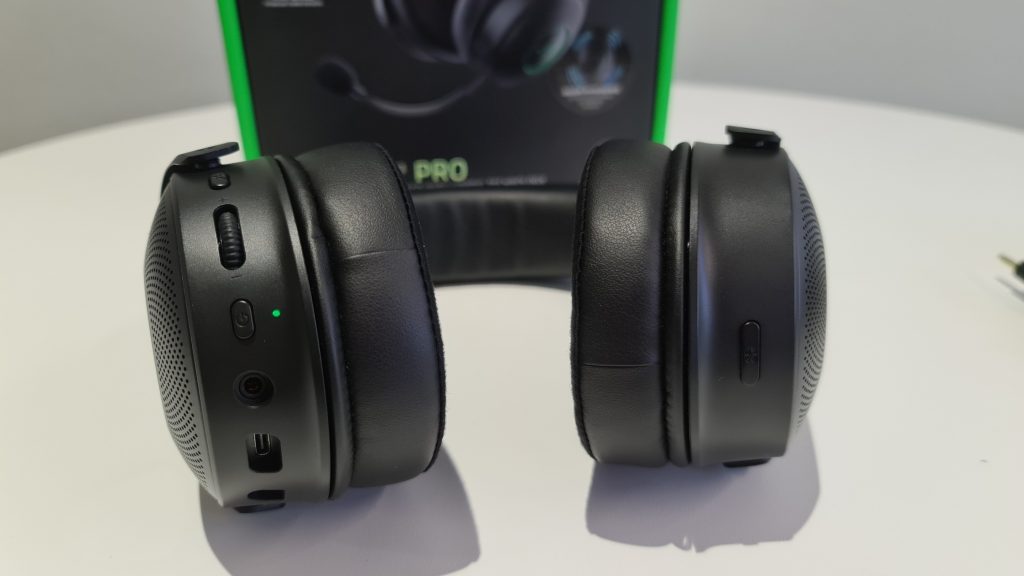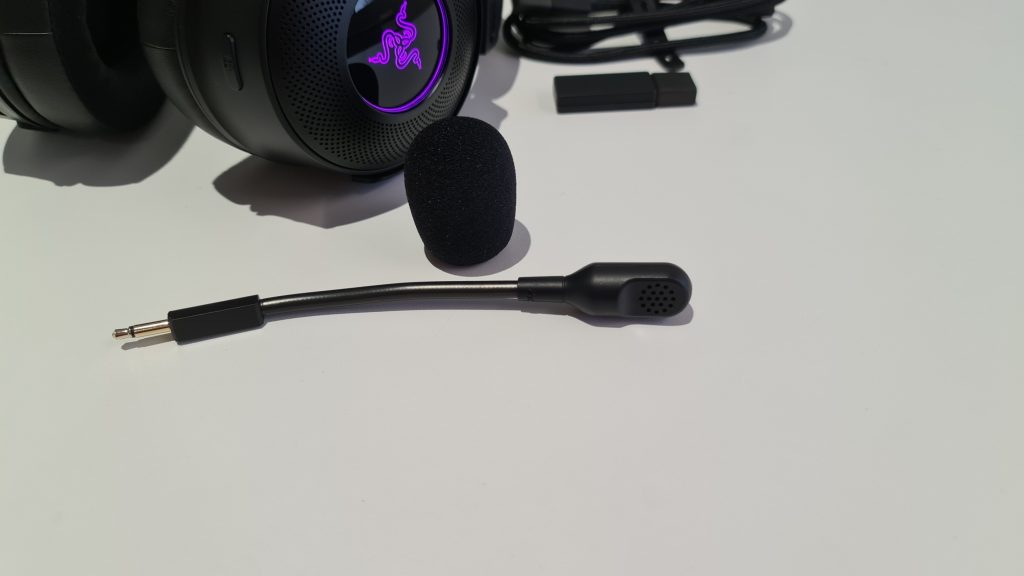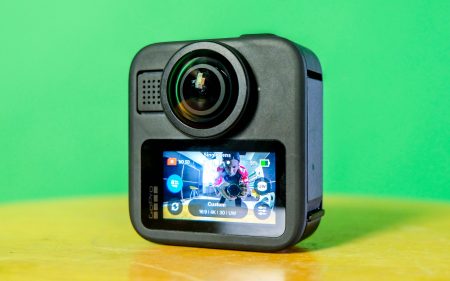The Razer Kraken V3 Pro is an inoffensively-tuned, solidly-built gaming headset that goes heavy on the features. Unfortunately, those features aren't going to be for everyone and the software could prove problematic.
-
Design
-
Sound
-
Build
-
Battery
-
Features
-
Price
Have you ever held a vibrating controller and thought ‘I want this on my ears’? Nor have we. But someone at Razer did. Back in 2018, a whole team thought it would be a good idea to put haptic motors in each earcup of the Razer Nari Ultimate, right where the audio drivers are.
That was a risky move that turned out to be not an awful idea. At the time many critics expected that, with some refinement, it might become a staple of gaming peripherals. Well, Razer must’ve agreed because it continues to release headsets with the haptic tech inside. It also recently acquired another company, Interhaptics, to further its Hypersense efforts.
Which brings us to the Razer Kraken V3 Pro, the latest high-end gaming headset from the snake company to forego cables and feature haptic technology. It has a lot more going for it than just the rumbles. It also comes with spatial audio from another Razer acquisition, THX. But is dealing with troublesome software and the fairly steep asking price worth it? Well…
A well-constructed tight fit
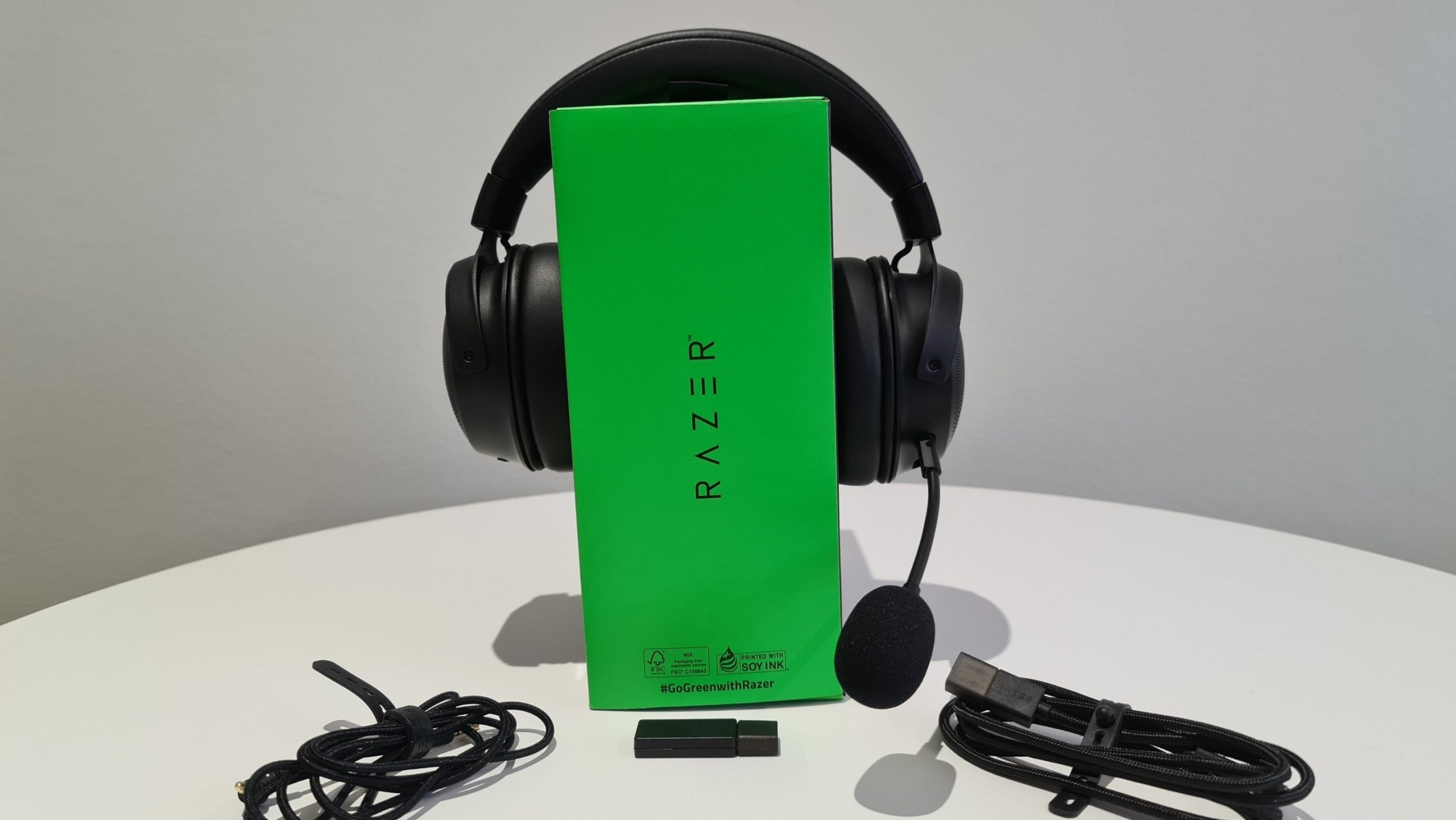 Razer might be keen on trying something new when it comes to features but the same can’t be said about the Kraken Pro’s design. It hasn’t changed much since the first Kraken headset came out in 2012. Sure, it’s been modernised over the years and the company has relaxed a little with the nauseating colours. But the iconic shape has stayed the same.
Razer might be keen on trying something new when it comes to features but the same can’t be said about the Kraken Pro’s design. It hasn’t changed much since the first Kraken headset came out in 2012. Sure, it’s been modernised over the years and the company has relaxed a little with the nauseating colours. But the iconic shape has stayed the same.
The Kraken V3 Pro features the signature large, round over-ear earcups with Razer’s 50mm Titanium drivers inside. Those are kept from touching your ears with thick memory foam. That foam is covered in a leatherette material on the sides and breathable fabric for the surfaces that touch your head.
The wide headband is also wrapped with leatherette-covered memory foam to give your head a bit of cushion. This, together with the tight clamping force, results in a snug fit that provided decent passive noise isolation. But that’s all the noise-reducing features you’re getting here. There’s no active noise cancellation present.
The build quality is superb. The whole headset feels premium in-hand and on-head. The headband has well-defined numbered tactile adjustment steps so you can remember your perfect fit. The only thing missing is some manoeuvrability in the earcups. The cups don’t move at all which makes them cumbersome when not over your ears. The earcups house the controls and while the left side is crowded, everything is spaced out enough that after a few tries we could navigate by feel.
Can you hear me now?
On the left is the mic mute toggle button, volume wheel, a power button that also acts as a play/pause button for media, a 3.5mm port, a USB-C port for charging and the port for the detachable mic. The right cup is reserved for the Hypersense haptic button.
The microphone quality is about what you’d expect from a wireless gaming headset – good enough. Your teammates should have no problem hearing your cries for assistance. Whether they respond is another matter.
This is a gaming headset so you aren’t going to be commuting to work with them. That’s not to say you can’t. It’s possible. But these don’t have Bluetooth, so unless you want to sit with an open laptop, you’re stuck with the included 3.5mm cable. That isn’t ideal, especially when you realise that most mainstream smartphones turfed the headphone jack years ago.
The Kraken V3 Pro is also compatible with Xbox consoles or the Nintendo Switch via its 3.5mm cable. If you’ve got a Switch and want to go wireless, Nintendo’s console will need to be docked. You can also use the dongle with a PlayStation 4 or 5 although if you’re a solid member of the blue team, you’d be better off with the Kaira Pro.
Have you tried turning it off and on again?
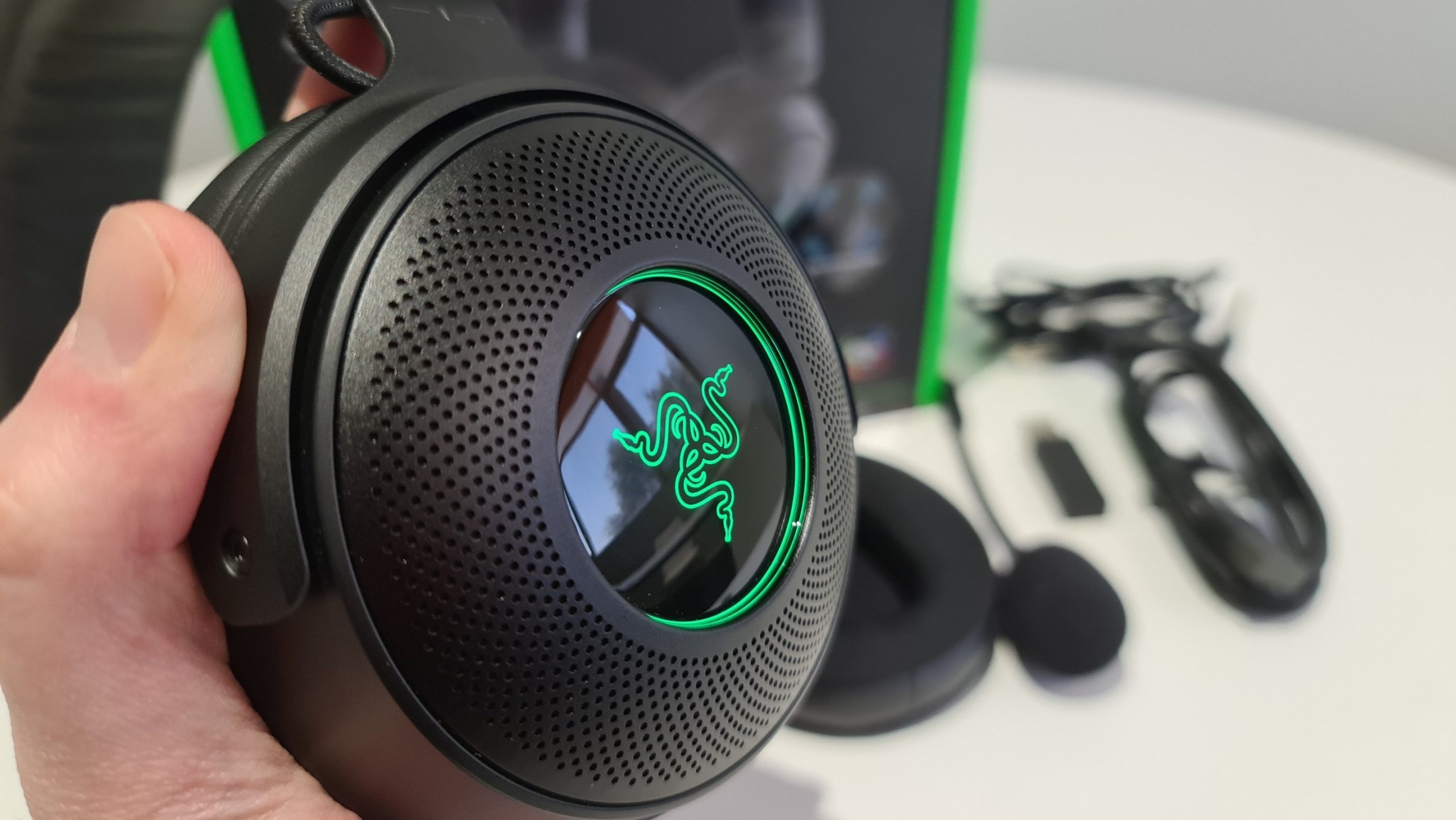 Connecting these to a PC is where they really sing (when you don’t encounter problems). Through Razer Synapse you’ll have access to a heap of customisation settings. You can control volume, the haptic feedback intensity and THX spacial audio (more on these later), sound and microphone enhancements, and RGB effects.
Connecting these to a PC is where they really sing (when you don’t encounter problems). Through Razer Synapse you’ll have access to a heap of customisation settings. You can control volume, the haptic feedback intensity and THX spacial audio (more on these later), sound and microphone enhancements, and RGB effects.
Unfortunately, the software experience was what let this headset down. Often the dongle would need to be unplugged and reconnected before it would realise we wanted to use the headphones. These problems are exacerbated when you use more than one audio output and switch between them.
Another problem we had with Synapse is the battery indicator. Doesn’t everyone like to see exactly how much battery they have left? A numerical value that tells you ‘hey, you better plug me in if you want an uninterrupted next session.’ Synapse doesn’t offer that. Just a small battery icon with a vague approximation of how much juice remains.
This might not have been as irksome if the battery lasted longer than a day. With RGB and Hypersense on the default setting) the Kraken Pro started asking for a cable after around ten hours of use. That’s close enough to Razer’s quoted 11 hours but that last 20-or-so percent (we don’t know how much because that’s a secret Synapse refuses to share) is pretty much unusable with the loud *BEEP* every 5 seconds to let you know they’re nearing the end. If you turn off the haptics and RGB (you can’t see it anyway) you can stretch the battery life to around 40 hours. That’s much more palatable but then you aren’t getting the most out of your purchase.
Sound you can feel
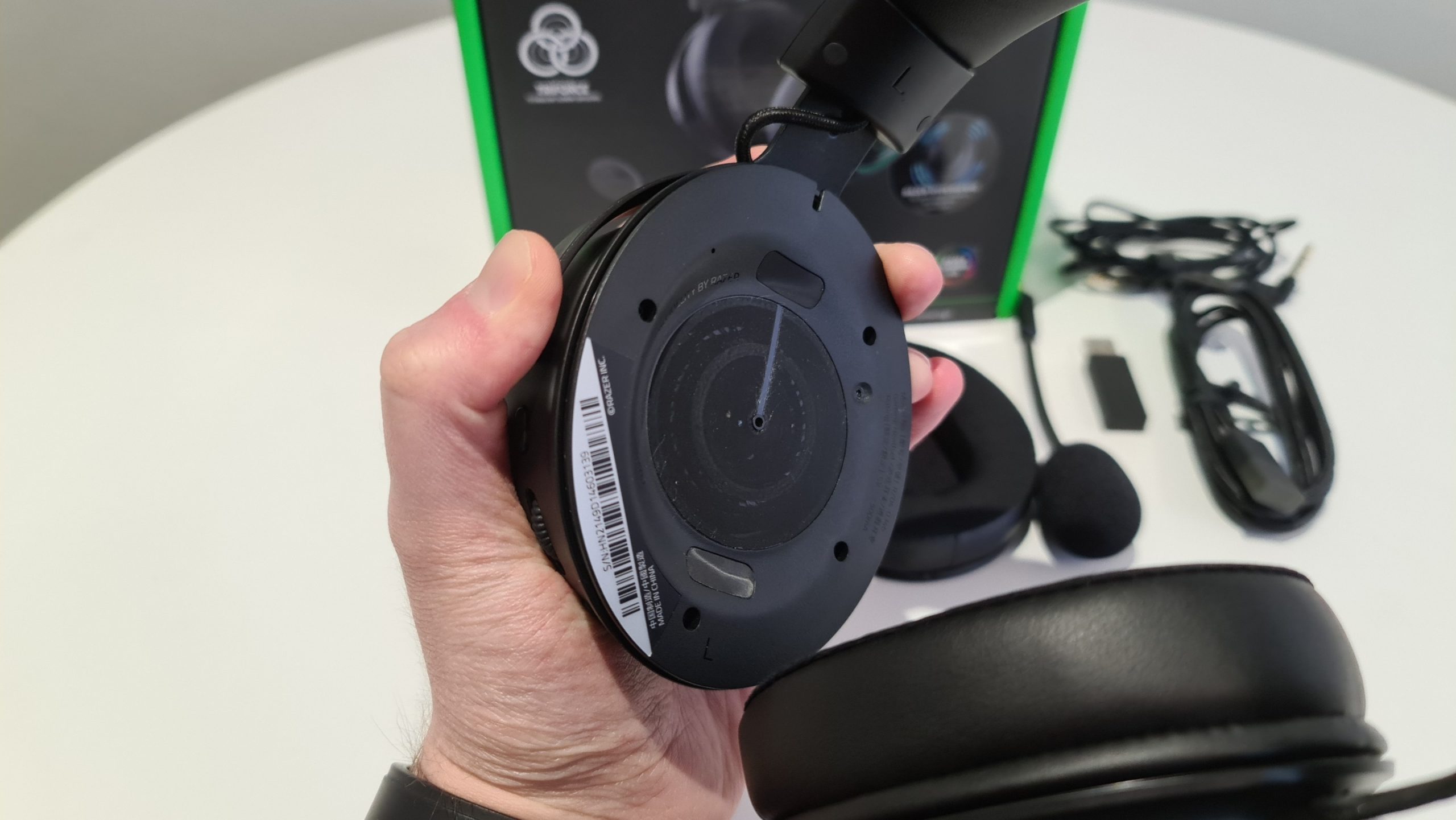 The main event is the audio experience. We were pleasantly surprised by the Kraken Pro’s sound profile. We expected a mess of muddy bass and harsh, shouty highs but their tuning is relatively inoffensive. Lows are amplified which can get a bit boomy at times but it’s a refined boom. High frequencies are also amplified but in a tonally balanced way. And if you don’t like how they sound there’s a handy equaliser for you to play with.
The main event is the audio experience. We were pleasantly surprised by the Kraken Pro’s sound profile. We expected a mess of muddy bass and harsh, shouty highs but their tuning is relatively inoffensive. Lows are amplified which can get a bit boomy at times but it’s a refined boom. High frequencies are also amplified but in a tonally balanced way. And if you don’t like how they sound there’s a handy equaliser for you to play with.
Then there’s the haptics. We’ll say from the onset that it has potential in the right circumstances but it still feels like a gimmick most of the time. We found it worked best in some movies and single-player games. We tried it out in God of War on PC and in that title, the haptics do add an extra layer of immersion. When you can feel the dull thud of Kratos’ axe returning to his hand in your hands and your ears, the only way to make that more immersive is to actually throw an axe.
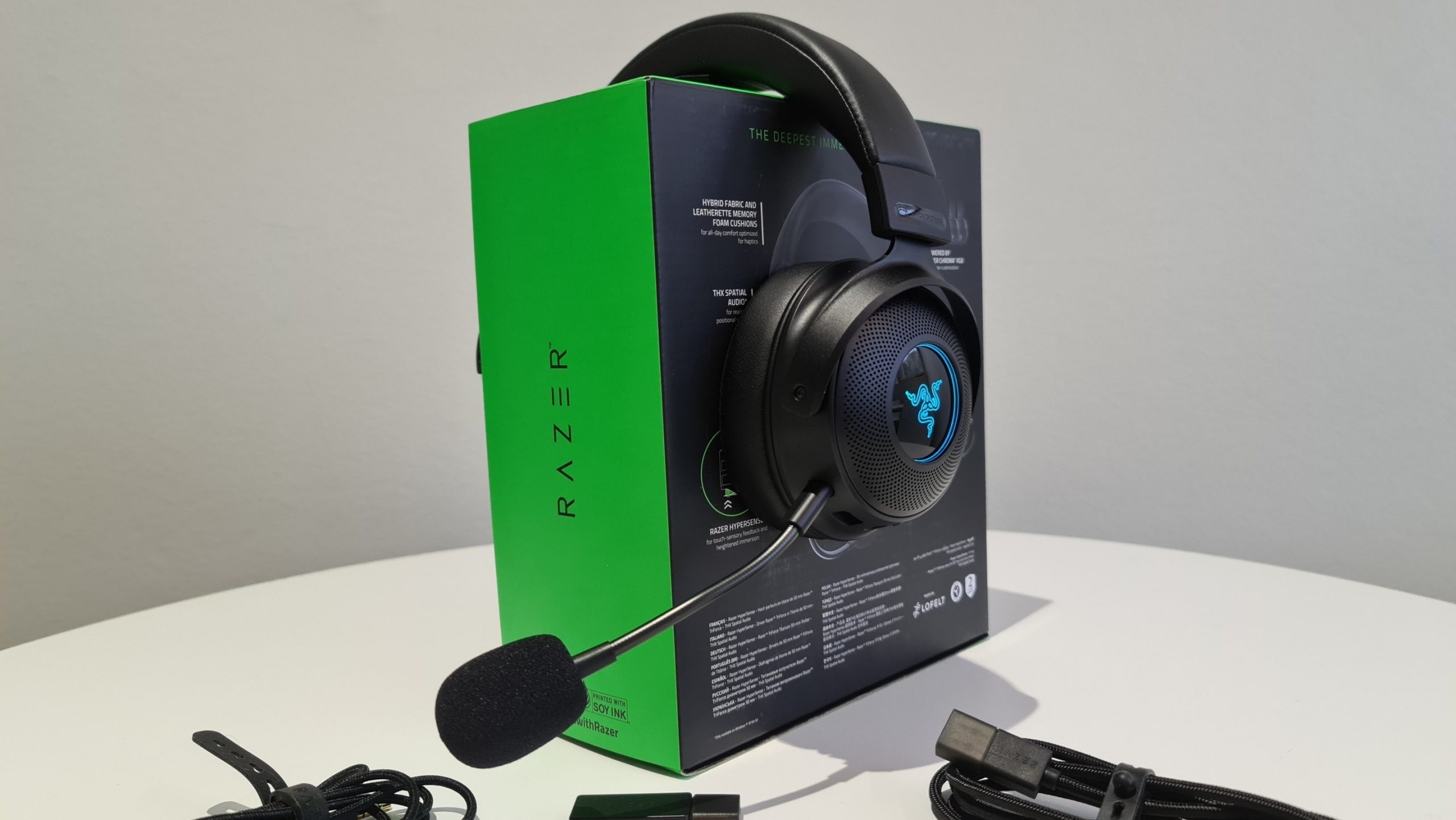 We also tried out the haptics within CS:GO thinking it might give us an edge when we can feel the enemy footsteps approaching but that sadly was not the case. The only real difference it made here was to annoy us until we turned it off.
We also tried out the haptics within CS:GO thinking it might give us an edge when we can feel the enemy footsteps approaching but that sadly was not the case. The only real difference it made here was to annoy us until we turned it off.
It’s quite possible that this technology will continue to improve over time to become commonplace in most PC gaming peripherals. Think of how much better the haptics in the DualSense controller are versus the first DualShock. But until then, we’ll keep it on the ‘Low’ setting and save it for single-player games.
Razer Kraken V3 Pro verdict
The Razer Kraken V3 Pro is a great wireless gaming headset in its simplest form. The Hypersense haptic feedback and THX spatial audio both add to your gaming experience if you’re willing to give them a shot but don’t expect miracles. It’s a pity that if you’re a fan of the Kraken range and want a wireless solution, the Kraken V3 Pro is your only option and you’re stuck with Hypersense whether you want it or not.
What was more of a pity were the problems we encountered with Razer’s Synapse software. But if they’re your only output device, then you won’t have to worry about that. You will need to have R4,350 if you want a pair for yourself. You probably won’t regret picking up a pair but that isn’t enough for a solid recommendation.

